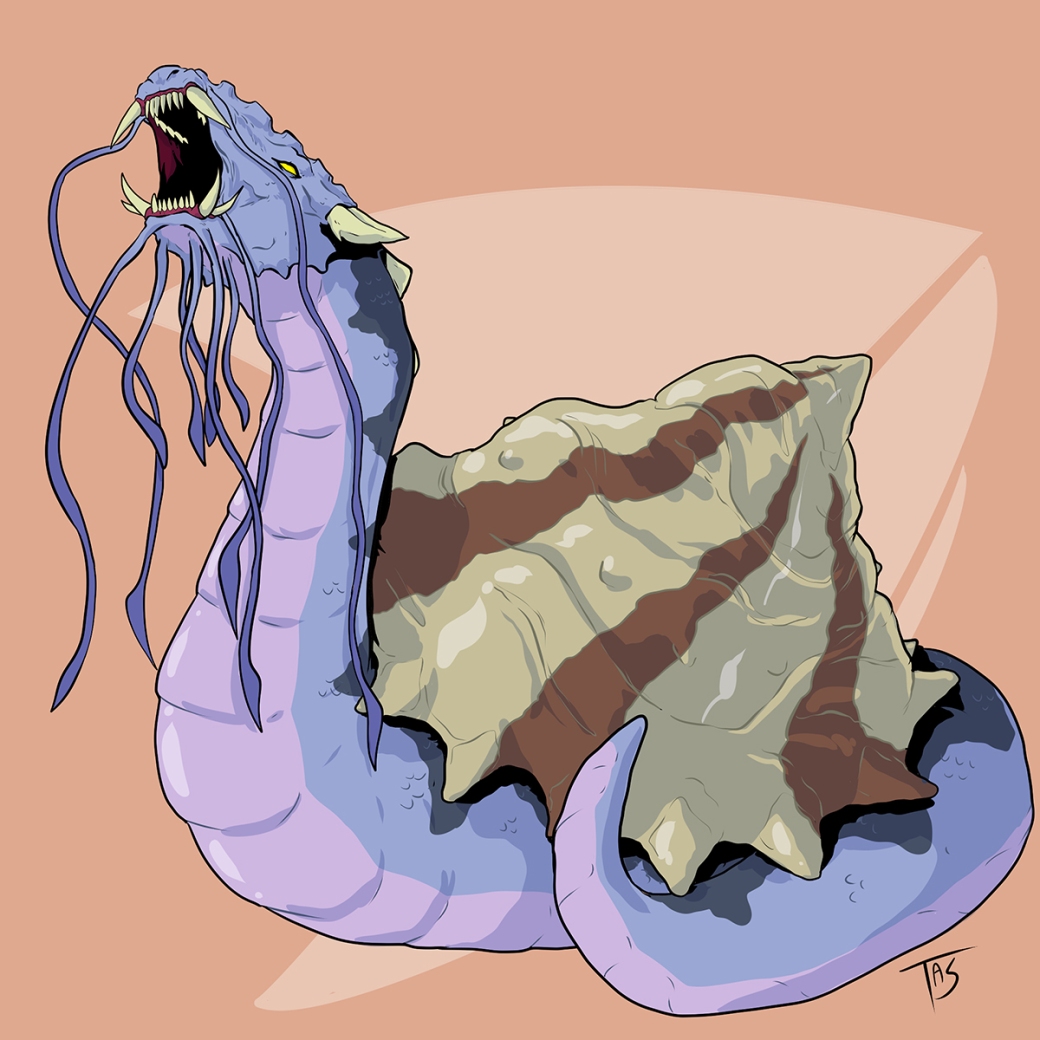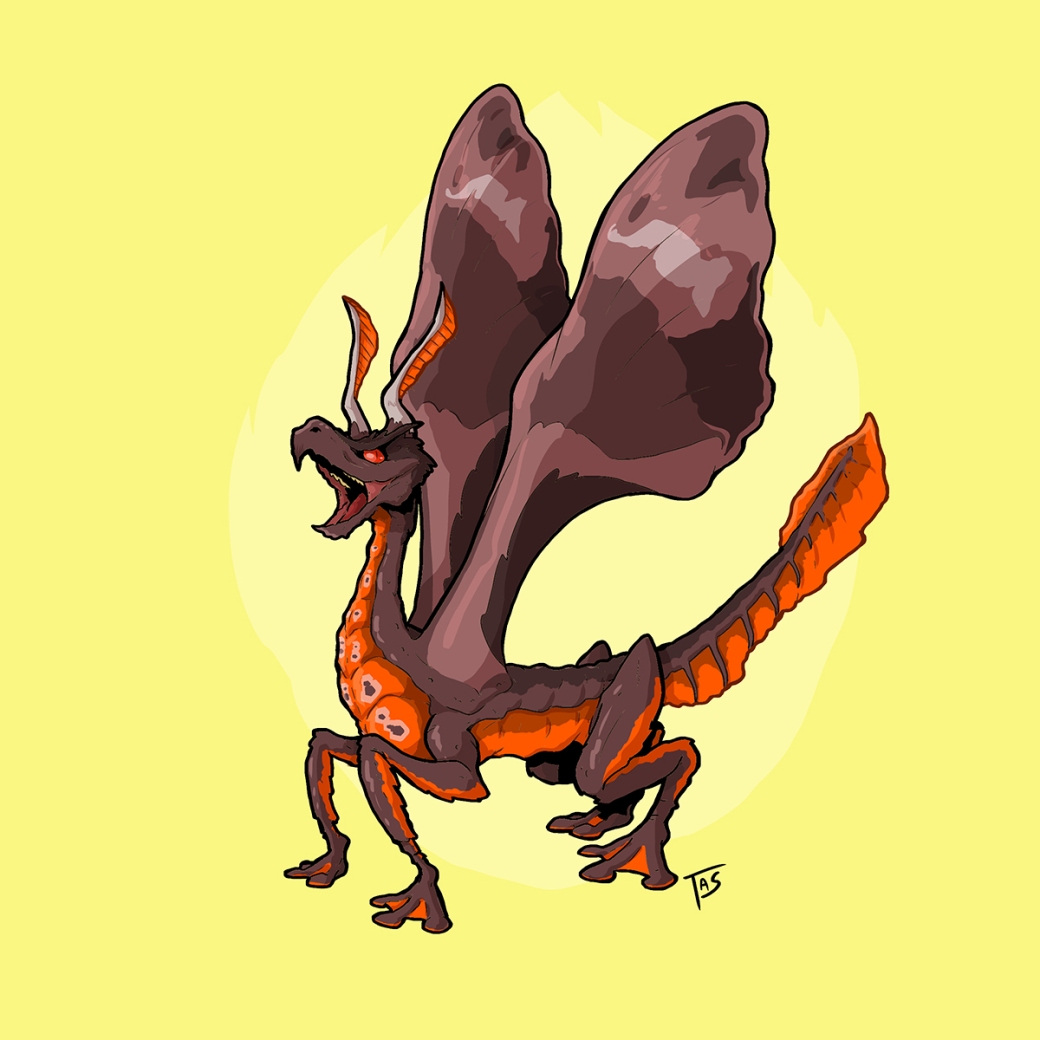
Labbu
Region of origin: Mesopotamia
Labbu, the lion-serpent, was a massive dragon spoken of in what remains today only as fragmentary texts. Thought to be created by the chief deity Enlil, to eliminate humanity which had become a nuisance to him, Labbu terrorized the beasts of the sea, air and land, including the cities of man. The other gods, fearing the power of the creature, enlisted a hero Tishpak to slay the creature and aided him in performing the task, though the specifics of the fight have been lost. After being slain, it was said Labbu was so massive it took three years, three months and a day for the body to fully bleed out.









